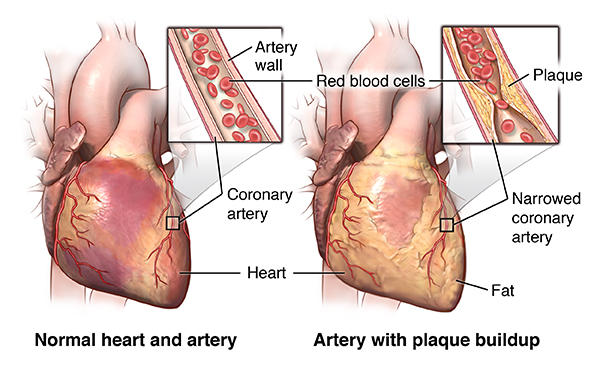
The Role of Stents in Treating Coronary Artery Disease
Coronary Artery Disease (CAD) remains one of the leading causes of death worldwide, primarily caused by the buildup of plaque within the arteries that supply blood to the heart.
As this plaque hardens and narrows the arteries, it reduces blood flow, increasing the risk of heart attacks and other cardiovascular complications.
Thankfully, modern medicine has developed effective treatments that not only alleviate symptoms but also significantly reduce the risk of fatal events.
One of the most impactful innovations in this field is the coronary stent.
What Is a Stent?
A stent is a small, mesh-like tube made of metal or polymer that is inserted into narrowed or blocked coronary arteries during a procedure called angioplasty.
Once positioned, the stent helps keep the artery open, ensuring steady and uninterrupted blood flow to the heart.
In many cases, stents are coated with medication (drug-eluting stents) to prevent the artery from narrowing again - a condition known as restenosis.
How Stents Help in Coronary Artery Disease
The primary role of a stent is to restore and maintain proper blood flow through the coronary arteries. Here’s how stents contribute to the management and treatment of CAD:
Relieves Symptoms: Stents help alleviate symptoms like chest pain (angina), shortness of breath, and fatigue that result from reduced blood supply.
Prevents Heart Attacks: By opening up the blocked artery, stents can significantly reduce the risk of a heart attack.
Quick Recovery: Unlike open-heart surgery, stent placement is minimally invasive and requires significantly less recovery time.
Improves Quality of Life: With improved blood circulation, patients often experience enhanced physical capacity and overall well-being.
The Procedure: How It Works
The stenting process is typically part of a procedure called Percutaneous Coronary Intervention (PCI) or angioplasty.
A catheter is inserted through a small incision in the groin or wrist and guided to the blocked artery.
Once the blockage is located, a balloon is inflated to open up the artery, and the stent is deployed to hold the artery open permanently.
Dr. A Sai Ravi Shanker, an Interventional Cardiologist in Ameerpet, has performed over 20,000 such cath lab procedures with remarkable precision.
His expertise spans from simple angioplasties to highly complex interventions such as Left Main Interventions, Bifurcation Stenting, and Chronic Total Occlusions (CTO).
Types of Stents
There are several types of coronary stents, including:
Bare-metal stents (BMS): These were the first generation of stents and are rarely used today due to higher rates of restenosis.
Drug-eluting stents (DES): Coated with medication that slowly releases to prevent scar tissue from forming, making them the most commonly used stents today.
Bioresorbable stents: These dissolve over time and are still being evaluated for long-term effectiveness.
Specialized stents: Such as those used in carotid arteries or vein grafts, tailored to unique vascular needs.
Who Needs a Stent?
Patients who have been diagnosed with coronary artery disease through tests such as an angiogram, and are found to have significant blockages in one or more coronary arteries, are typically considered candidates for stenting.
In emergency settings, such as a heart attack, stents can be lifesaving by restoring blood flow quickly.
It’s crucial to have such procedures performed by a highly skilled professional. Dr. Sai Ravi Shanker, widely regarded as the Best Cardiologist in Hyderabad, has a proven track record in performing life-saving coronary interventions.
His role as the HOD and Senior Consultant Cardiologist at Aster Prime Hospitals, coupled with his academic contributions and leadership positions in professional cardiology societies, underscores his commitment to clinical excellence.
Post-Stent Care
After a stent placement, patients are generally prescribed medications like antiplatelet therapy to prevent blood clots.
Lifestyle changes - such as a heart-healthy diet, regular exercise, stress management, and quitting smoking—are equally important to ensure long-term success.
Regular follow-ups with your cardiologist are essential to monitor heart health and detect any complications early.
At Aster Prime Hospitals, patients under the care of Dr. Sai Ravi Shanker receive personalized follow-up plans to ensure optimal recovery and minimal risk of restenosis.
As a leading Interventional Cardiologist in Ameerpet, Dr. Shanker emphasizes comprehensive care that extends beyond the procedure.
Why Choose Dr. Sai Ravi Shanker?
With over 20 years of experience, Dr. Shanker combines medical expertise with compassionate, patient-centered care.
His affiliations with international cardiology societies such as FACC and FESC reflect a global standard of excellence. Moreover, his contributions through books, publications, and leadership roles in the Cardiology Society of India make him a trusted name in the field.
For those seeking the Best Cardiologist in Hyderabad, Dr. Shanker’s credentials, results, and reputation speak volumes. Whether you're managing chronic heart issues or facing an acute cardiac event, his guidance ensures you are in the safest hands.
Conclusion
The use of stents in treating coronary artery disease has transformed the prognosis of heart patients. With minimally invasive techniques, faster recovery times, and high success rates, stenting is a cornerstone of modern cardiology.
Under the expert care of professionals like Dr. A Sai Ravi Shanker, patients not only receive cutting-edge treatment but also the assurance of compassionate and comprehensive heart care.
